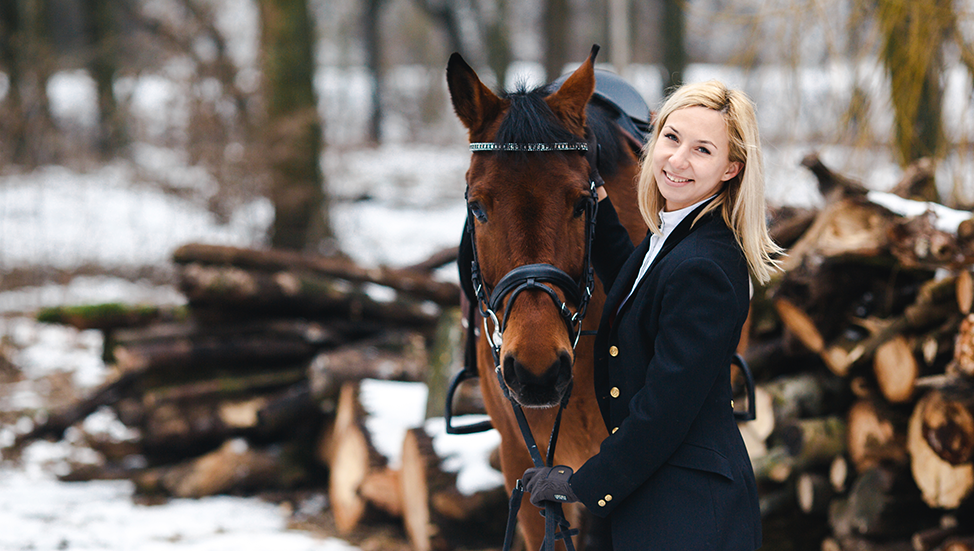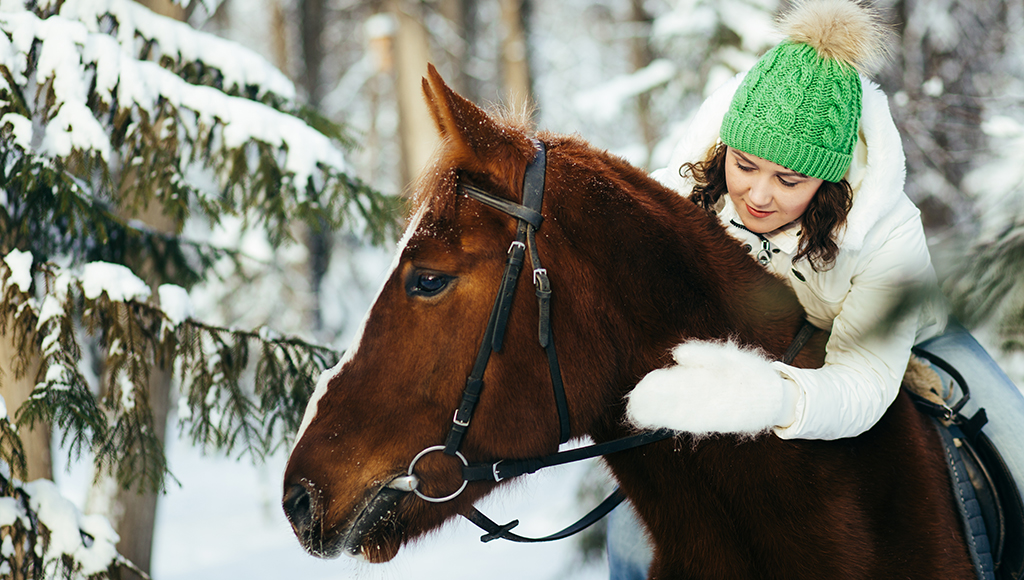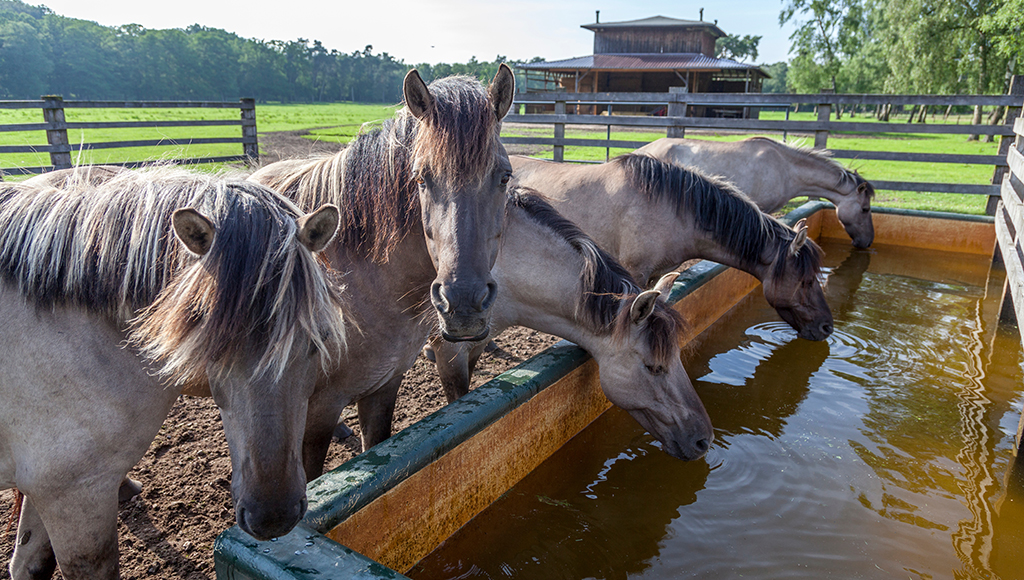How to care for horses during the winter season
When making the decision to purchase a horse there are many things to consider. However, in the excitement of it all, what's often overlooked are the changing demands of horse care during the changing seasons. So, we're here to tell you what first time horse owners can expect when winter rolls around.

Winter Care for Horses
At first glance caring for a horse might not seem too hard IF you’re willing to put in the time, effort, and money. They eat a ton, require an appropriate amount of land, and tend to have higher vet bills when emergencies arise. But, if you’re a horse lover, you know that the hard days are well worth the companionship of these amazing animals!
What new horse owners sometimes fail to take into consideration, however, are the winter months. If you live in a place where the weather dips below 40 degrees, then horse care takes on a whole new meaning. With the changing of season from fall to winter comes new challenges.
Below are just some of the basics for keeping your horse comfortable and well cared for during the cold season.
Shelter
First and foremost is shelter. Horses are animals that require fresh air and exercise to stay healthy. That means that keeping them indoors during the cold season might not be as kind as you think, even if leaving them standing out in the cold seems cruel. In fact, it’s easy for horses to develop respiratory issues if they’re kept inside for too long. Therefore, they need to roam and move to keep their bodies healthy and in shape. But that doesn’t mean they don’t need shelter.
Winter brings with it snow, sleet, ice, rain, and often brutal gusts of wind. While being cooped up in a stuffy barn can be detrimental for their health, being fully exposed to the elements isn’t ideal either. Providing your horse with basic shelter such as a run-in (a three-sided outbuilding with one open side), or access to go in and out of a barn as they please, is ideal. This way they can get out of the wind and the weather when they need to.
Horses with shelter lose 20-30% less body heat than those completely out in the open, so it’s all about balance. Whatever shelter you choose should be well-ventilated to prevent any respiratory issues and also be set up for feed and water, which will not only give your horse another reason to shelter, but provide a safe place to eat and drink.
Jackets
Not all horses need jackets, but it’s important to know if yours does and if so, what kind to get for them. So, how do you know what kind of jacket to get your horse? Well, sometimes it’s as easy as seeing them shiver on a particularly cold day. But the best approach is to talk to your equine vet about whether or not a jacket may be necessary. The vet will take many things into consideration; your horse’s weight, diet, coat quality, and more, to determine if a jacket is necessary and if so, what weight would be best.
If your horse does require a jacket, make sure you’re checking regularly to gauge whether or not they are getting too hot underneath. You can slip a hand beneath and feel their coat to make sure they aren’t sweating. If they are, the blanket should be taken off and the proper measures (usually involving a drying process) followed.
In addition, it’s recommended to check that whatever jacket you choose is secured effectively and correctly. It’s very easy for wind to pick up and blow a jacket into a dangerous position, tangle the straps, or even blind the horse in some cases. As if winter weather isn’t hard enough without added accidents!
Hay
Hay is a large part of a horse’s diet, and horses need to consume about 2% of their weight daily to maintain their health. On average, a horse that is 1,000lbs will consume about 15-20lbs of hay a day, nd in the colder months, you can increase that amount by 5-10lbs easily. Just digesting the fiber alone creates enough body heat to keep a horse nice and warm during a cold winter day, so providing them with the correct supply of hay is vital.
Having an appropriate feeding station is also important. Horses should be able to access their hay readily, even in a storm. That means figuring out what kind of feeder you want to use – hay nets, racks, hut feeders, etc. – and making sure it’s accessible both for you and your animal companion. If you’re lucky enough to have a barn that the horse can access, having a feeding station indoors can also help. That way, they can choose to get out of the weather and bulk up a bit before heading out again.
Water
Water is everyone’s least favorite chore in winter. It’s already cold, and holding a bucket of water only makes you colder! But, if you want to own a horse, keeping them hydrated is an essential part of their care. Horses drink anywhere from 10-15 gallons of water a day, but that can vary greatly depending on the horse. The problem with water in cold weather is that it needs to be kept de-iced. You can do this with various heaters; in fact, some troughs have the heaters built right in.
Other popular options include floating de-icers or insulated buckets. However, both pose problems. Many heaters need to be plugged in, so access to an electrical system is key here. Moreover, insulated buckets, although convenient, aren’t fail-safe. They can definitely still freeze over in cold enough weather, but they’re a better option for horses that spend a good amount of their day indoors where icing over is less likely.
Ice Management
Unfortunately, hand in hand with water is ice. Winter brings cold enough weather for freezing, melting, and re-freezing to happen. This can create hazardous conditions for both humans and horses.
A 1,000lb horse coming down on a strip of ice can cause some serious damage, making it incredibly important to know the layout of your land and what spots are prone to ice patches. Things to consider are: Where does water often run off? What areas have iced over in the past? Did the trough get over-filled and create a sheet of ice?
Wherever you can- break up ice, create traction, or lead your horse away from it. Old bedding, sand, and ash are all great options to provide traction for both people and animals while preventing ice melt or ice burn. Put water, hay, and feed where there is less likely to be ice in order to draw them away from dangerous areas. Keeping your horse safe will result in added safety for you, too.
All in all
Most winter horse care revolves around common sense, but some situations are tricky. Whenever possible, seek advice from your equine vet and discuss what having a horse in winter is like with other horse owners. The most important thing is making sure you’re creating a safe, healthy, and nourishing environment for both yourself and your equine companion!
Ready to start saving money on pet wellness care?
Then take a look at Mint Wellness, the pet wellness plan that provides fast reimbursement on routine pet care. Save on vaccinations, wellness exams, preventatives, dental, and more!
Learn More

